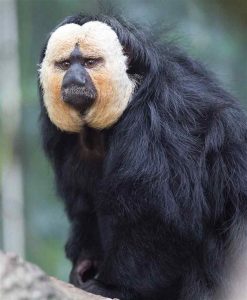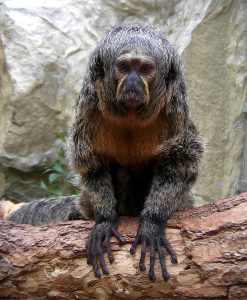Scientific name: Pithecia pithecia
Conservation status:
Life expectancy: 15 years in the wild.
Gestation period: 146 days
x
Lifestyle and Location:
- These are new world monkeys and can be found in the rainforests of the Amazon Basin and live on the coastal evergreen trees.
- They are very rarely found in forests that flood and very rarely go down to the ground and live in the trees.
- The white-faced sakis dwell on the lower levels of trees because of the competition of food with the bearded sakis who are higher up in the trees.
- Their diet consists of fruit, seeds and flowers, however they are also known to eat small birds and bats.
Appearance:
The males have a white ring around their faces, hence why they are called ‘white-faced’ but the females do not have this white ring. Females also have shorter hair. Both genders are a dark brownish-grey with little streaks on the sides of their nose. They have long fingers with long nails. This makes gripping branches a lot easier. They weigh around 1.3-1.5 kg and are about 30-41 cm long with a tail that is roughly the same size.
Joss‘s Facts
- They have adapted special canine teeth that help crack hard nuts.
- Their display is very aggressive, they start off by growling and fluffing up their body, then shaking their body and growling and if none of that works then they will start to shake branches with their whole body. This is if a predator has taken interest in it and it notices.
- They can leap up to 30 feet and have been called ‘flying monkeys’ before.

